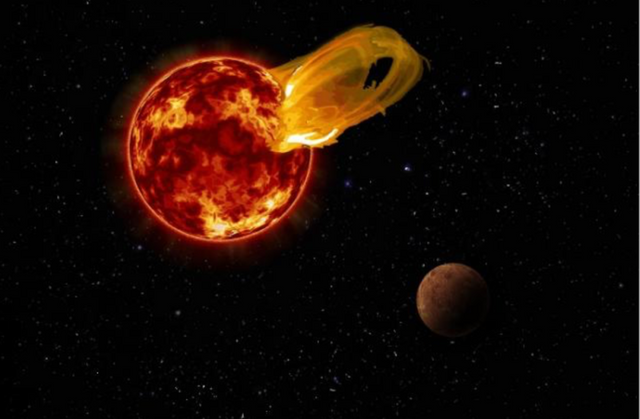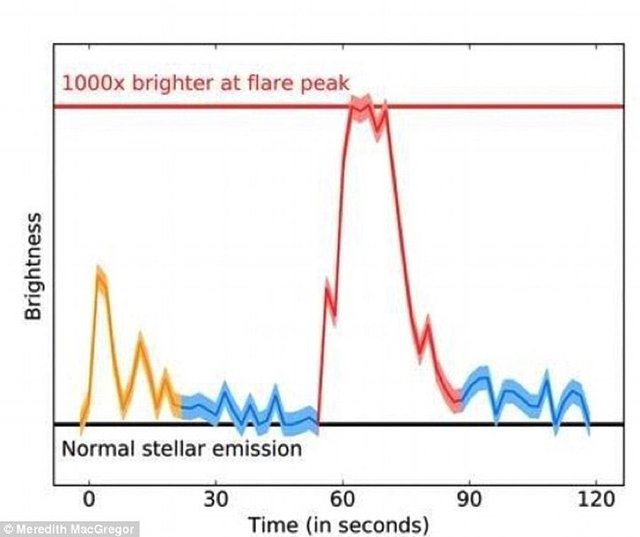Astrophysicists confirmed: on the planet near the nearest star to the sun, The end of world is 4 light year from earth !!!!!

On March 24, 2017, the radio telescopes of the ALMA complex, established in Chile in the Atacama Desert, recorded a powerful flash that blazed in the Proxima Centauri, the closest star to the Sun. For a few minutes it became brighter by a thousand times.
Outbreak discovered recently - American astrophysicists, led by Meredith MacGregor (Meredith MacGregor) from the Institute of Carnegie (Carnegie Institution, Department of Terrestrial Magnetism - DTM), viewed the data collected and stumbled on the phenomenal.

Scientists have estimated that the flash on the Centaurus Proxima was 10 times higher than the similar flashes that occurred on the Sun. At the same time, the dose of deadly radiation was 4,000 times higher than the level created by our - even the luminous overflowing with every measure.
"If there was a life on the planet revolving around Proxima Centauri, now it's not there," McGregor assures. - Living beings - even microbes - are unlikely to survive such a monstrous cataclysm.
Meredith and his colleagues greatly upset the enthusiasts. In fact, they deprived them of the hope that the brothers on reason would find themselves somewhere nearby.
And there were hopes. They were just pinned on Proxima Centauri - specifically on the planet of this star, named Proxima b. The fact that it undoubtedly exists by the European Southern Observatory (ESO) astronomers was announced on August 24, 2016 at a special press conference held at the head office of the observatory near Munich .

The centaur's star system is the closest to us. It is just over 4 light years away . In the system three stars - Alpha Centaurus A, Alpha Centaurus B and Proxima Centauri. Two stars - A and B - are similar to our Sun and by characteristics and size. Proxima Centauri is a red dwarf.
The diameter of the red dwarf is slightly larger than that of our Jupiter . Light, he gives only 0.15 percent of the solar. It weighs about 10 times less than the Sun. But the discovered planet - Proxima b - is located very close to its luminary - to this very red dwarf - about 20 times closer than the Earth to the Sun. Therefore, the heat that the planet receives - it's 66 percent of what our Sun gives us - is enough to warm up, but do not overheat.

By now it became known: Proxima b is a stony, earth-like planet. It is 30 percent heavier than the Earth, and in diameter they almost do not differ.
Proxima b rotates in a circular orbit, making one revolution in 11.2 terrestrial days - that is, the year there lasts less than our two weeks.
And most importantly: Proxima b is in the habitat, that is, at a comfortable distance from its star - where water can be present in liquid form.

Scientists did not exclude that on the discovered planet there are both the atmosphere and the oceans , called it the "second Earth", believed that there someone can live - up to sentient beings. But now there is definitely no one left. According to Meredith, the outbreak on the Centaurus Proxima destroyed both the oceans and the atmosphere. In a word, she made the end of the world.
It's a pity. Proxima b is within human reach. One day it would be possible to fly. But now such plans look meaningless - on whom to look, if there is no one there.
Prior to Proxima b - 4 light years. As much as we got the light from the flash. So, if it was caught in 2017, then it happened in 2013. That is, 5 years ago - on March 24, 2013.
